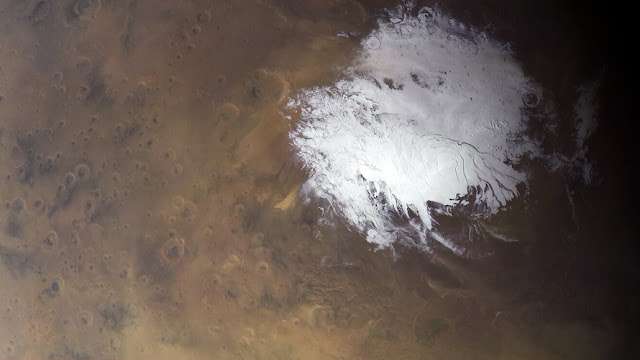
Introduction
In a discovery that could significantly impact our understanding of Mars and the potential for life beyond Earth, scientists have found strong evidence of a lake of liquid water beneath the Martian surface. This groundbreaking finding, made possible by data from the European Space Agency’s Mars Express orbiter, opens up new possibilities for the Red Planet’s habitability and future exploration.
The Discovery
Mars Express and the MARSIS Instrument
The European Space Agency’s Mars Express orbiter, launched in 2003, has been studying the Martian surface and atmosphere with a suite of scientific instruments. Key to this discovery is the Mars Advanced Radar for Subsurface and Ionosphere Sounding (MARSIS), a radar instrument designed to probe beneath the planet’s surface.
Evidence of Subsurface Water
Using data collected by MARSIS between 2012 and 2015, scientists identified a bright reflection beneath the southern polar ice cap, known as Planum Australe. This reflection, indicative of liquid water, was found at a depth of approximately 1.5 kilometers (0.93 miles) below the surface. The area of this potential lake spans about 20 kilometers (12.4 miles) in diameter.
Confirming the Findings
The research team, led by Roberto Orosei of the Italian National Institute for Astrophysics, carefully analyzed the radar data. They ruled out other potential explanations for the bright reflection, such as carbon dioxide ice or minerals, concluding that liquid water was the most plausible explanation.
Implications for Martian Habitability
Potential for Life
The presence of liquid water is a key factor in the search for extraterrestrial life. On Earth, where there is water, there is life. This discovery raises the tantalizing possibility that microbial life could exist on Mars, potentially in the subsurface lake or similar environments.
Geological Significance
The finding also has significant implications for understanding Mars’ geological history. The presence of liquid water suggests that there may be geothermal or other sources of heat beneath the surface, keeping the water from freezing despite the frigid temperatures on the Martian surface.
Challenges and Next Steps
Accessing the Subsurface Lake
Reaching the subsurface lake to confirm the presence of water and search for signs of life poses significant challenges. Drilling through 1.5 kilometers of ice and rock is beyond current technological capabilities, but future missions could be designed with this goal in mind.
Future Missions
Upcoming missions, such as NASA’s Mars 2020 rover and the European Space Agency’s ExoMars rover, are equipped with advanced instruments that could further investigate Mars’ subsurface. These missions could help refine our understanding of the distribution and properties of liquid water on Mars.
Broader Impact on Mars Exploration
Human Exploration
The discovery of liquid water on Mars is a crucial step toward human exploration of the planet. Water is essential for human survival, and the ability to access liquid water could support future manned missions. It could provide drinking water, oxygen, and even fuel for rockets.
Inspiring Future Research
This discovery is likely to inspire renewed interest and investment in Mars exploration. It underscores the importance of continued scientific investigation and international collaboration in uncovering the mysteries of the Red Planet.
Conclusion
The strong evidence of a lake of liquid water beneath Mars’ surface is a landmark discovery in planetary science. It not only enhances our understanding of Mars but also fuels the hope of finding life beyond Earth. As scientists continue to analyze data and plan future missions, the potential for groundbreaking discoveries on Mars remains high. This finding marks a significant step forward in our quest to explore the cosmos and understand our place in the universe.
